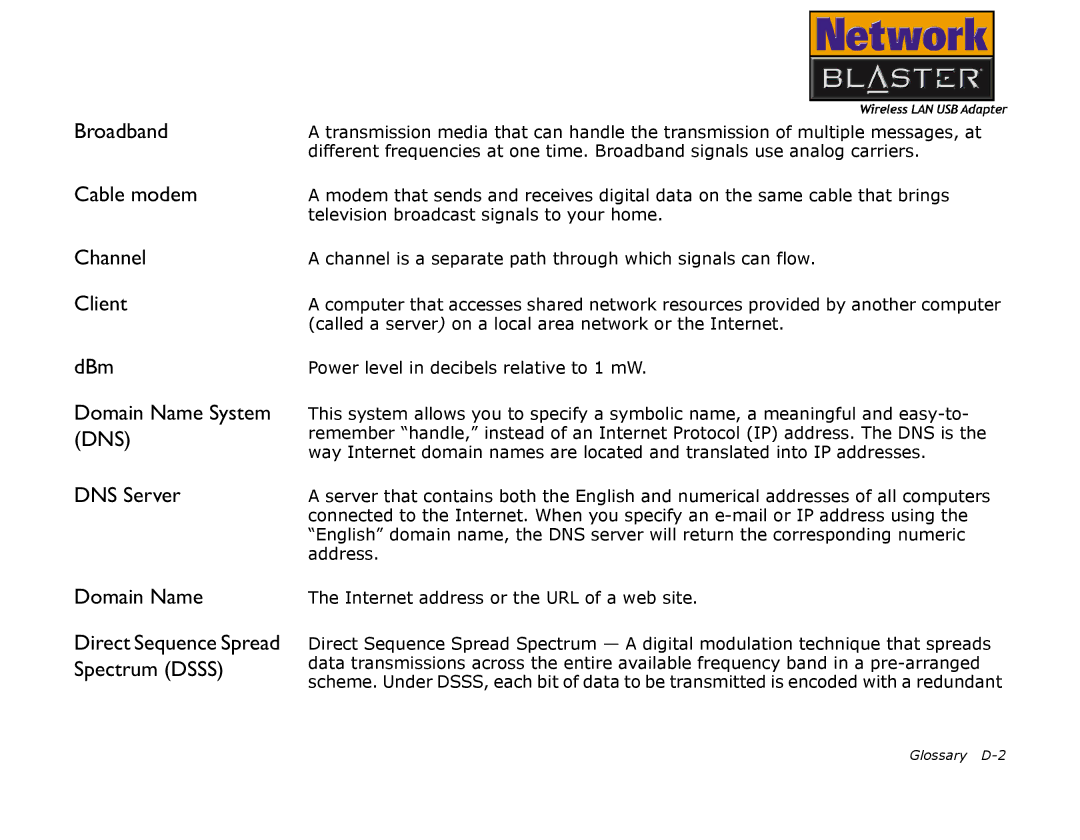
Broadband
Cable modem
Channel
Client
dBm
Domain Name System (DNS)
DNS Server
Domain Name
Direct Sequence Spread Spectrum (DSSS)
A transmission media that can handle the transmission of multiple messages, at different frequencies at one time. Broadband signals use analog carriers.
A modem that sends and receives digital data on the same cable that brings television broadcast signals to your home.
A channel is a separate path through which signals can flow.
A computer that accesses shared network resources provided by another computer (called a server) on a local area network or the Internet.
Power level in decibels relative to 1 mW.
This system allows you to specify a symbolic name, a meaningful and
A server that contains both the English and numerical addresses of all computers connected to the Internet. When you specify an
The Internet address or the URL of a web site.
Direct Sequence Spread Spectrum — A digital modulation technique that spreads data transmissions across the entire available frequency band in a
Glossary
